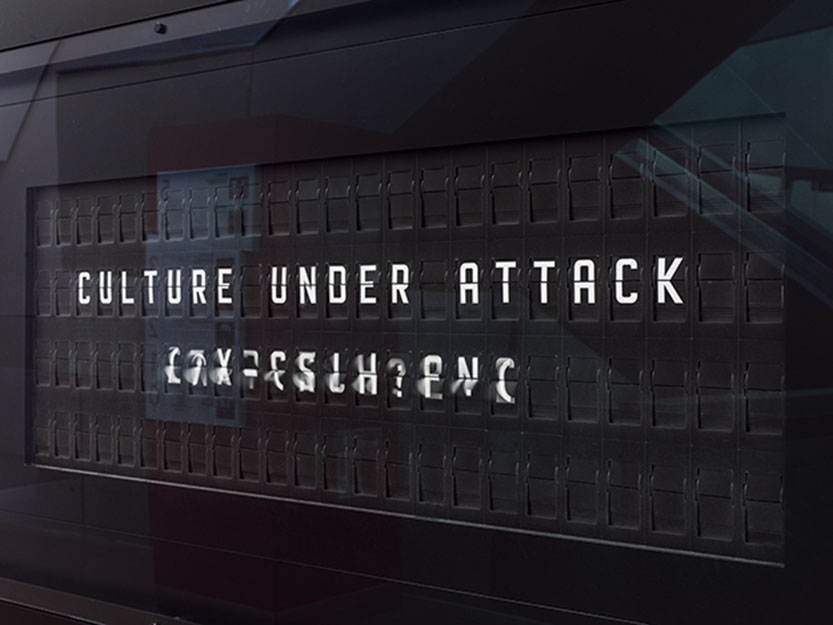The 2019 season of exhibitions at the Imperial War Museum (IWM) in London explore the impact of acts of war against what defines who we are – our culture. From the buildings we build for our communities to the tangible and intangible things we treasure as individuals. Culture Under Attack invites visitors to consider what happens when culture is threatened, targeted or deliberately annihilated.
Comprising three exhibitions at IWM London, the season includes What Remains, an exhibition curated in partnership with Historic England about the deliberate destruction of cultural places, the objects and stories that bring them to life and the rebuilding of culture that follows; Rebel Sounds, an immersive experience exploring the significance of music in relation to cultural and personal identity; and Art In Exile, which uncovers how cultural treasures in British museums and galleries were evacuated and protected during the Second World War.
As part of the curatorial narrative, IWM asked visitors to reflect on challenging questions about what it means to protect culture in a time of conflict. For the exhibition designers, this meant thinking of an innovative way to publicly display those questions, reflecting their changing, shifting and evolving nature.
The Split Flap Installation
The IWM design team took inspiration from old schedule boards in train stations and designed a kinetic Split Flap installation which became the central feature linking the three exhibitions and asking provocative questions relating to the season.
“Should historic buildings be protected in conflict zones?”
“Is it worth risking prison in order to protect music?”
“Should art be saved during war?”

These are just a few of many questions the viewer is confronted with before and after they visit the exhibitions. This was an ideal solution to the visitor experience, allowing the themes of the exhibition to resonate long after the viewer leaves the museum.
The delicate nature of the Split Flap mechanism and the high circulation area meant that it was important to come up with a solution that would protect the installation whilst retaining clear visitor views of the display. The ambient sound created by the gentle whir of the mechanisms was also important to preserve.
The challenge was to source a material that had very specific qualities for this central display, including credentials such as: low-reflection, anti-static, shatter proof, scratch resistant, and lightweight to remove to service the Split Flap if needed.
Glass was swiftly discounted as an option due to the sheet size required and the issue of weight.
Tru Vue offered the perfect solution in Optium Museum Acrylic.
The Framing
To create the frame to hold the acrylic in place the design team and fabricators worked together to come up with a minimal, elegant design.

This started with prototyping in the Museum’s workshop. In order to retain sound bleed, the decision was made to have the frame spaced off from existing MDF panel by 50 mm. There was concern that due to the large span of the sheet material there would be a significant amount of flex in the mid-point and if enough pressure was applied the acrylic sheet could touch the Split-Flap mechanism.
By introducing the slim L-section metal profile this risk was minimised if not omitted. Again, to ensure the frame was as subtle as possible, it was then powder coated black to match the wall surface it was mounted on.
The installation was a challenge but with patience and good communication the frame and acrylic were safely mounted in to position and secured with standard shop-kit fixings.

Optium Museum Acrylic is highly effective in this scenario as the focus remains on the Split Flap installation.
Share this Article:
This article is intended for educational purposes only and does not replace independent professional judgment. Statements of fact and opinions expressed are those of the author(s) individually and, unless expressly stated to the contrary, are not the opinion or position of Tru Vue or its employees. Tru Vue does not endorse or approve, and assumes no responsibility for, the content, accuracy or completeness of the information presented.
